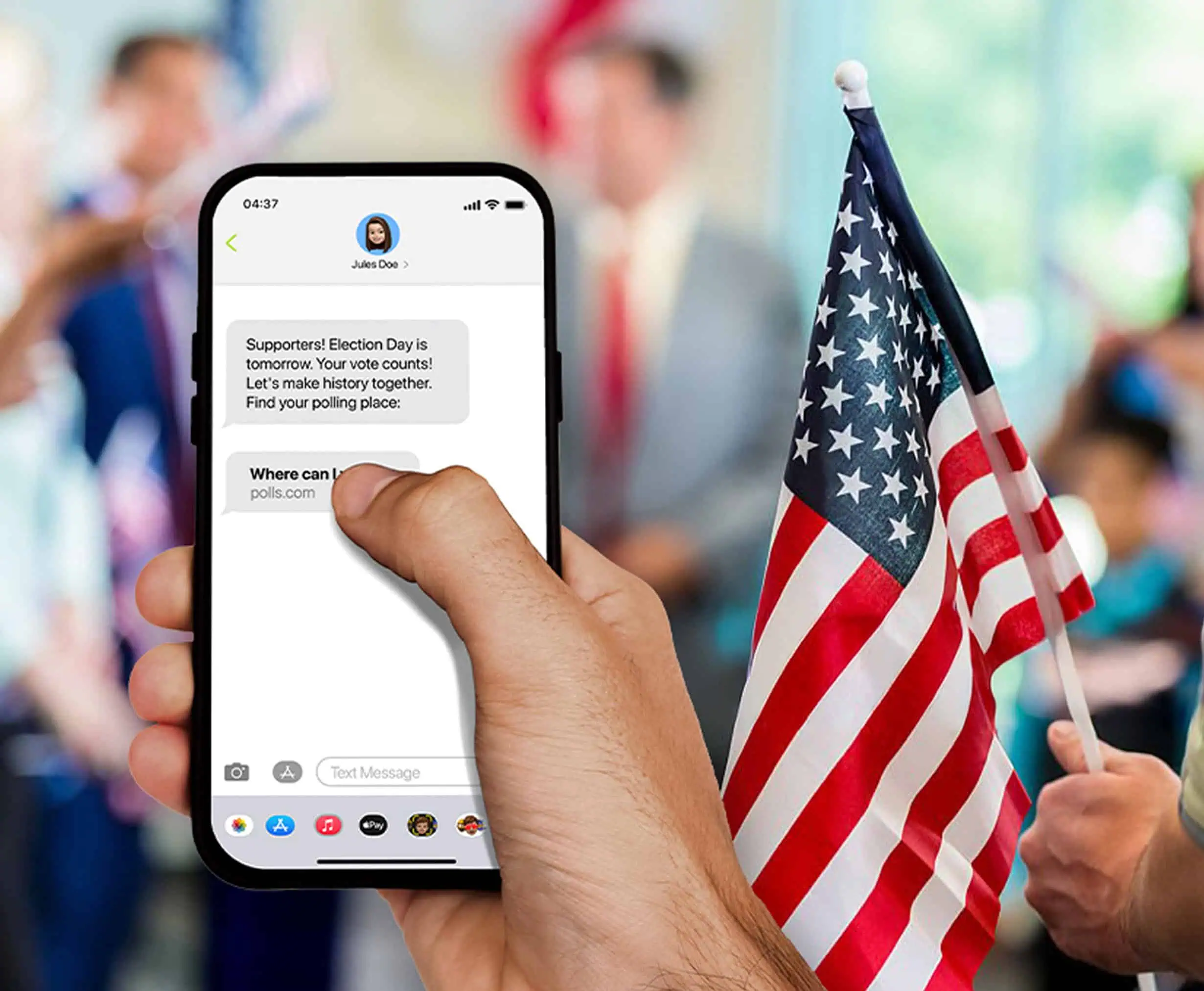Polling is having a reckoning. After years of missed calls, shrinking response rates, and rising skepticism, the industry is turning to new tools to adapt. The recent Campaigns & Elections piece on how AI is reshaping polling highlights how firms are experimenting with artificial intelligence to cut costs, analyze data faster, and refine question design.
That’s a necessary evolution. But there’s another powerful channel that should be part of every pollster’s toolbox: text messaging.
In politics, campaigns, and issue advocacy, SMS has become the go-to channel for reaching voters directly. Open rates are much better than email. Delivery is almost instantaneous. And unlike the cold call, a text feels less invasive and more conversational. Yet for polling, many firms are still hesitant to go all in.
That hesitation could be costly. Here’s why polling companies should lean into text messaging now, and how it can complement the AI revolution that’s already underway.
The Challenges Polling Faces Today
Traditional polling is under pressure.
- Declining response rates: Fewer people answer unknown numbers. Caller ID and spam filters make phone outreach a grind.
- Sampling bias: Online panels skew toward people who are already highly engaged or incentivized. Getting a truly representative sample is harder than ever.
- Speed expectations: Campaigns and political organizations want results in hours, not days. Traditional survey methods can’t always deliver.
- Cost pressure: Budgets are tight, but data demands are growing. Firms are expected to do more with less.
AI is helping solve some of these problems on the back end. Smarter weighting, faster analysis, and better question phrasing are all important. But what about the front end, how do we reach people? That’s where text messaging comes in.
Why Text Messaging Works for Polling
Text messaging isn’t just another outreach channel. It offers unique advantages that line up with today’s polling challenges.
1. Higher Response Rates
While phone calls are ignored and emails go unopened, texts almost always get read. Studies show SMS open rates above 90%, and response rates far higher than email surveys. That’s important for pollsters who need reliable data quickly.
2. Real-Time Feedback
When you need to test a message, gauge sentiment, or track opinion shifts, speed matters. Text surveys can be distributed and completed within hours. In the fast-moving world of campaigns, that agility is everything.
3. Better Representation
Text messaging can reach audiences that are under-sampled in other methods. Rural voters, younger voters, and lower-income communities are more likely to have a mobile phone than reliable broadband. Incorporating text into your mix helps balance the sample.
4. Cost-Effective Scaling
Compared to live phone calls or large-scale online panels, text messaging is relatively inexpensive. Pollsters can run small-sample tests or larger surveys without ballooning overhead.
5. A Personal Touch
Polling is more effective when people feel they’re having a conversation, not checking boxes on a cold form. A well-crafted text messaging survey feels quick, easy, and human, boosting participation and trust.
How Text Messaging and AI Work Together
The article makes the case that AI will transform polling by reducing costs and making data analysis more powerful. That’s true. But AI alone won’t fix the industry’s core access problem: reaching real people.
That’s where text messaging fills the gap. And together, text messaging and AI can create something even stronger:
- Smarter Question Design: AI can generate and test short, mobile-friendly questions optimized for clarity and response. Perfect for SMS.
- Adaptive Polling: AI can adjust follow-up questions based on previous responses. Instead of a static 10-question script, a voter gets a personalized flow via text.
- Faster Insights: As responses come in, AI can analyze trends in real time, feeding campaigns actionable insights before the next news cycle hits.
- Sentiment Analysis: Beyond yes/no answers, AI can detect tone, intent, and emotional signals in open-ended text responses.
The synergy is clear: text messaging improves reach, while AI improves efficiency. Together, they make polling faster, cheaper, and more accurate.
Addressing the Concerns About Text Polling
Of course, any innovation comes with challenges. Here are the biggest concerns, and how the industry can address them.
Concern 1: Regulatory Hurdles
Text messaging is tightly regulated. TCPA rules and carrier guidelines mean you can’t blast messages without consent.
Solution: Polling firms must work with compliant partners, build opt-in lists, and clearly communicate purpose. Voters are more likely to engage when they understand the value of participating.
Concern 2: Message Fatigue
Nobody wants to be spammed with endless surveys. Over-messaging risks opt-outs.
Solution: Limit frequency, keep surveys short, and use conversational language. A two-minute text message survey feels manageable, not overwhelming.
Concern 3: Bias in Access
Not everyone has a mobile phone, and not every phone plan supports unlimited texting.
Solution: Text shouldn’t replace every other method. It should supplement online and phone surveys, helping close gaps rather than creating new ones.
Concern 4: Data Integration
Polling data from SMS must be weighted and combined with other modes.
Solution: Use AI and statistical modeling to merge datasets effectively. Text doesn’t live in isolation, it strengthens the whole picture.
Case for Early Adoption
The polling industry can’t afford to wait. The 2026 election cycle will be bigger, faster, and more competitive than anything before. Campaigns and political organizations are already using texting to mobilize voters, drive donations, and deliver messages at scale.
Polling needs to catch up. Firms that embrace SMS now will:
- Deliver faster results to clients
- Reach harder-to-poll demographics
- Differentiate themselves in a crowded market
- Combine AI and text messaging to set new industry standards
Firms that hesitate risk being left behind, relying on outdated methods while competitors move faster, cheaper, and with better data.
Best Practices for SMS Polling
For pollsters ready to make the move, here are some starting points:
- Pilot First: Test text surveys on small samples to refine tone, length, and timing.
- Keep It Short: SMS works best with 3-5 questions or a link to a mobile-friendly survey.
- Be Transparent: Let respondents know who you are, why you’re reaching out, and how their answers will be used.
- Use Conversational Language: Formal questions feel stiff in text. Write like you’re speaking to a voter directly.
- Respect Privacy: Make opting out easy, and ensure data security.
- Combine With Other Modes: Use SMS as one piece of a multi-channel strategy. Balance the strengths of each method.
The Bottom Line
The polling industry is changing. AI is already reshaping how data is collected, processed, and interpreted. But the outreach needs innovation.
Text messaging is the bridge between old polling methods and the demands of modern politics. It’s fast, accessible, and personal. Combined with AI, it has the power to restore polling’s relevance and reliability in a skeptical age.
For pollsters, the question isn’t whether to adopt text messaging. It’s how fast you can integrate it before your competitors do.
The future of polling won’t be built on phone calls alone. Text messaging belongs at the center of that future.



